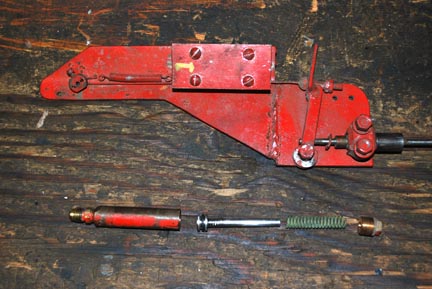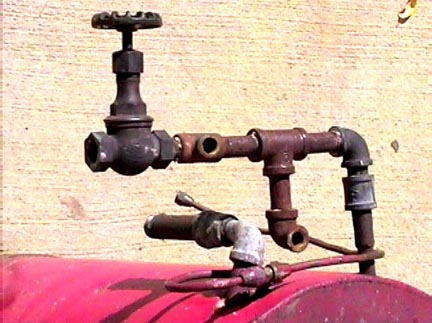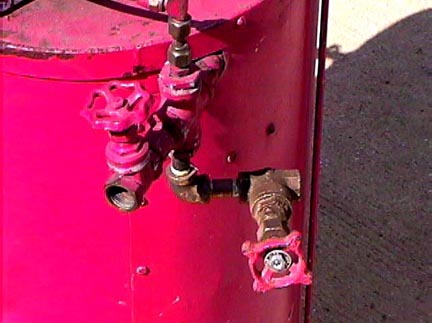The nice thing about a rocket stove is that wood is dropped in from the top and no smoke escapes during the fuel loading. Also the wood burns at the bottom where it is automatically gravity dropped in making it self-feeding.
This is a monotube and so there are three helical coils. The center one is a water wall 8” in diameter tight wound around the central stove pipe. The definition of a water wall is one where the coils are wound without any spacing between them; they touch each other. Therefore heat exchange only takes place on half of the total tubing surface area.
The outer helical is likewise a water wall. It is 12” in diameter. It is touching the sheet metal casing that is insulated on the outside. The middle coil is loosely wound with about half the diameter spacing between the coils so that as the hot gases rise they can flow completely around the tubing so that all of the tube surface is a heat exchanger.
Water flow is as follows: cold water in at the top to the outer 12” coil. At the bottom a transition is made to the middle 10” diameter coil where the water flows up.
Here is where the cleverness comes in. At the top there is a upward bend to the tubing and at that point there is a spark plug water level sensor. It works with electricity and water conductivity. After the spark plug the flow is to the inside 8” coil which is, quite obviously because it is past the water level sensor as well as being the last coil, the superheater. Some water may go past the spark plug as the coils are filling, but not so much that it will not evaporate fully on the way down.
 At the bottom there is a transition to a smaller tube that goes up vertically to the top. The reason it is a small tube is because it has to fit between the coils. That is steam out. At the bottom there is a transition to a smaller tube that goes up vertically to the top. The reason it is a small tube is because it has to fit between the coils. That is steam out.
The control system will be discussed later on. Pressure appears to open and close the draft which, with a wood fire, is what varies the firing rate. The spark plug turns the water feed on and off. So what we have is a water level monotube and a pressure controlled wood fire.
We will need to run this to see what the stack temperature is as that determines boiler efficiency. Burning efficiency should be pretty good as there is a very large very hot combustion chamber to burn the volatiles from the wood. It is a compact unit and because it is a monotube quite efficient and easy to make. A helical coil is much easier to wind than a pancake coil. The larger spaces between the coils should go a long ways to preventing carboning up of the coils. That is something that happens to most wood fired monotubes when the fire is shut down so that creosote and carbon is produced instead of a good hot fire.
If this works as well as predicted it will be a good model for all future wood fired steam generators. It is compact, light, safe, and requires a very minimum of welding. |



